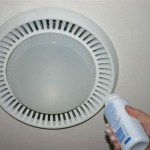Bathroom Photo Ideas: Capturing Style and Functionality
Bathroom photography presents a unique set of challenges and opportunities. Unlike other spaces in a home, bathrooms are often smaller, lack natural light, and are highly functional areas. The goal of effective bathroom photography is to showcase the room's design, highlight its features, and evoke a sense of cleanliness, comfort, and relaxation. Whether the photographs are for real estate listings, interior design portfolios, or simply to document a personal renovation project, understanding the nuances of bathroom photography is crucial.
Successful bathroom photography extends beyond simply pointing a camera and pressing the shutter. It requires careful planning, attention to detail, and a strategic approach to lighting, composition, and styling. This article will explore various ideas and techniques to capture stunning bathroom photographs that effectively communicate the space's essence.
Lighting is Paramount: Illuminating the Space Effectively
Lighting plays a crucial role in any photograph, but it is particularly important in bathroom photography. Bathrooms often lack sufficient natural light, relying heavily on artificial sources. Therefore, mastering the art of lighting becomes essential to create visually appealing and well-lit images.
The first step is to assess the existing lighting conditions. Note the location of windows, the type of light fixtures, and the overall brightness of the room. If possible, utilize natural light as the primary source. Open blinds or curtains to allow as much natural light as possible to flood the space. However, direct sunlight can create harsh shadows and unwanted glare. Diffuse the light by using sheer curtains or by shooting during times of the day when the sunlight is softer, such as early morning or late afternoon.
Artificial lighting needs careful consideration. Overhead lights, vanity lights, and accent lights all contribute to the overall illumination of the bathroom. Experiment with different combinations of these light sources to achieve the desired effect. Ensure that the lights are clean and in good working order to avoid any flickering or unevenness. Consider using photography lights to supplement the existing lighting and provide additional fill light to reduce shadows and brighten dark areas.
White balance is another critical aspect of lighting. Different types of light sources have different color temperatures, which can affect the overall color cast of the image. Adjust the white balance settings on the camera to ensure that the colors are accurately represented. A warm white balance can create a cozy and inviting atmosphere, while a cool white balance can convey a sense of cleanliness and modernity. Experiment with different white balance settings to find the best balance for the specific bathroom.
Pay attention to reflections. Bathroom mirrors and glossy surfaces can create unwanted reflections of light sources or other objects in the room. Carefully position the camera and adjust the lighting to minimize reflections and ensure that the image is clear and uncluttered. Polarizing filters can be used to reduce glare and reflections on surfaces such as mirrors and tiles.
Composition and Styling: Creating Visually Appealing Images
Composition is the arrangement of elements within the frame. A well-composed photograph guides the viewer's eye and effectively communicates the intended message. In bathroom photography, composition involves carefully positioning the camera, choosing the right angle, and arranging the elements within the scene to create a visually appealing and balanced image.
Start by identifying the focal point of the photograph. This could be a unique architectural feature, a stylish vanity, or a luxurious bathtub. Position the camera to emphasize the focal point and draw the viewer's attention to it. Use the rule of thirds to create visually balanced compositions. Divide the frame into nine equal parts using two horizontal and two vertical lines. Place the focal point at one of the intersections of these lines to create a more dynamic and engaging image.
Consider the lines and shapes within the bathroom. Vertical lines can create a sense of height and grandeur, while horizontal lines can create a sense of stability and calmness. Use these lines to guide the viewer's eye and create a sense of depth and perspective. Pay attention to the shapes and patterns within the room. Symmetry can create a sense of order and balance, while asymmetry can create a sense of interest and dynamism. Experiment with different compositions to find the most visually appealing arrangement.
Styling plays a significant role in enhancing the visual appeal of bathroom photographs. A well-styled bathroom can evoke a sense of luxury, comfort, and relaxation. Start by decluttering the space and removing any unnecessary items. Keep the surfaces clean and organized. Add a few carefully selected accessories to enhance the overall aesthetic. Fresh flowers, scented candles, and plush towels can add a touch of elegance and sophistication.
Pay attention to the details. Small details can make a big difference in the overall impact of the photograph. Ensure that the towels are neatly folded, the soap dispenser is clean, and the shower curtain is properly hung. Consider adding a few personal touches to make the bathroom feel more inviting and lived-in. A book on the vanity, a robe hanging on the door, or a toothbrush in a holder can add a sense of personality and warmth. However, avoid cluttering the space with too many accessories. Less is often more.
Consider the perspective. Experiment with different camera angles to find the most flattering perspective. A wide-angle lens can be used to capture the entire bathroom in a single shot. However, wide-angle lenses can also distort the image and make the space appear smaller than it actually is. A standard lens can provide a more natural perspective. Experiment with different heights and angles to find the best perspective for the specific bathroom.
Technical Considerations: Camera Settings and Post-Processing
Beyond lighting and composition, the right camera settings are crucial for achieving high-quality bathroom photographs. Understanding aperture, shutter speed, ISO, and white balance is essential for capturing well-exposed and sharp images. Furthermore, post-processing techniques can enhance the final image and correct any imperfections.
Aperture controls the amount of light that enters the camera lens and affects the depth of field. A wider aperture (smaller f-number) creates a shallow depth of field, blurring the background and isolating the subject. A narrower aperture (larger f-number) creates a greater depth of field, keeping more of the scene in focus. In bathroom photography, a moderately narrow aperture, such as f/8 or f/11, is generally recommended to ensure that most of the bathroom is in focus.
Shutter speed controls the amount of time that the camera sensor is exposed to light. A fast shutter speed freezes motion, while a slow shutter speed allows motion blur. In bathroom photography, a relatively fast shutter speed is generally recommended to avoid camera shake and ensure that the image is sharp. A shutter speed of at least 1/60 of a second is typically sufficient, but it may need to be faster if the lighting is poor or if the photographer is using a handheld camera.
ISO measures the sensitivity of the camera sensor to light. A lower ISO setting produces cleaner images with less noise, while a higher ISO setting allows for shooting in low-light conditions but can introduce noise or grain into the image. In bathroom photography, it's ideal to use the lowest possible ISO setting to minimize noise. However, if the lighting is poor, a higher ISO setting may be necessary. Experiment with different ISO settings to find the best balance between image quality and brightness.
White balance, as mentioned earlier, is crucial for accurately representing the colors in the bathroom. Adjusting the white balance settings on the camera ensures that the colors are natural and consistent across the image. Experiment with different white balance presets or manually adjust the white balance to achieve the desired effect.
Post-processing is an essential step in bathroom photography. Software such as Adobe Lightroom or Photoshop can be used to enhance the image and correct any imperfections. Adjust the exposure, contrast, and white balance to fine-tune the overall look and feel of the photograph. Sharpen the image to enhance details and reduce noise to improve image quality. Correct any distortions or perspective issues. Remove any blemishes or distractions. Consider converting the image to black and white for a more dramatic effect.
By mastering these technical considerations, photographers can create high-quality bathroom photographs that are both visually appealing and technically sound. This combination of artistic vision and technical skill is key to producing images that effectively communicate the essence of the space.

11 Small Bathroom Ideas You Ll Want To Try Asap Decoholic

10 Contemporary Bathroom Ideas Fresh Functional And Fabulous Metropolitan Bath Tile

10 Master Bathroom Design Ideas For A Spa Worthy Decorilla Interior

82 Best Bathroom Decor Ideas For A Remodel With Soul

99 Stylish Bathroom Ideas

Traditional Bathroom Ideas Designer Showhouse Style Calypso In The Country

Small Bathroom Ideas 2025 Drench

Best Bathroom Ideas For Small To Large Master Bathrooms

60 Best Bathroom Decor Ideas To Recreate On A Budget
:max_bytes(150000):strip_icc()/5b-MaryPatton_RiceBlvd-12-a69a0f39426547c2b520d0c8510bf5e4.jpg?strip=all)
49 Primary Bathroom Ideas To Covet Right Now
Related Posts







